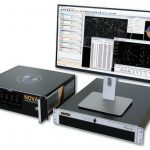On Wednesday, June 1st, 2022, M3 Systems and TilT Consulting were declared winners for their breakthrough solution of passive radar for detection and localization of obstacles, based solely on GNSS signals.
This is a project which was submitted in the context of the Move Me Smart category of the international call for ideas in the My EUSPA Competition 2021. This project was organized by the European Union Agency for the Space Program (EUPSA) for the realization of the concept (TRL<4).
It all started with a call for ideas launched by EUSPA which wants to support the development of innovative commercial solutions – such as mobile apps or hardware-based solutions – that leverage the Galileo and/or Copernicus EU Space data.
The competition was divided into 6 categories:
• Move me Smart: Smart mobility solutions across all transportation modes, that enable the improvement of efficiency and sustainability while also increasing safety.
• Space My Life: Consumer solutions such as mobile applications and other solutions using space data, with applications for health, gaming, sports, leisure, tourism and everyday life.
• Our Green Planet: Innovative solutions addressing environmental challenges, sustainable life, consumption and production.
• Map my World: Innovative surveying solutions to shape the future of geomatics, rural planning and smart cities by design.
• Farming by satellite: Technological solutions that manage the variability of agricultural production, improve crop yield, reduce environmental impact and optimize the food chain.
• Dive in Quantum: Innovative solutions which use quantum technologies (computing, sensing, simulation, encryption etc.) and enhance space applications.
A Competition and a Distinction: A First Step for this Innovation!
The SANGENE project (or Sens And Navigation on GNSS ENvironment Estimation), takes advantage of new synergies generated by the EUSPA competition. These are based on the match between breakthrough processing techniques and, flexible and automated computation architectures that can be fully deployed into the smart mobility sector.
The project aims at demonstrating the concept of an integrated GNSS-based passive radar for the detection and first localization of obstacles. Today’s operational navigation equipment often use a combination of different equipments to identify and locate other carriers and/or obstacles. These means do not permit the detection and visualization of non-equipped or uncooperative carriers, thus becoming a source of danger for others.
Our designed solution is a passive radar technology based solely on GNSS signals which is integrated into a localization and navigation device currently available on-board an aircraft or a drone.
The idea consists of using existing radio sources for the detection of obstacles, thanks to reflected signals. GNSS signals can be considered as “opportunity signals” that can also be used for detecting obstacles. This is thanks to GNSS satellites which behave as multiple radar signals sources and which are widely available while remaining discrete.
This principle of passive detector also makes it possible to increase the localization capacity of the GNSS devices already present, without having any major architectural changes to their design: this provides a possibility to optimize their cost while guarantying the safety of all users.
Within a few months, this solution has passed from a first level of concept and definition to an implementation model. It now has all the impetus provided by the competition and the necessary support to prepare the performance validation phase, which shall take place in real situations as well as in the implementation of the first bricks of product development.





